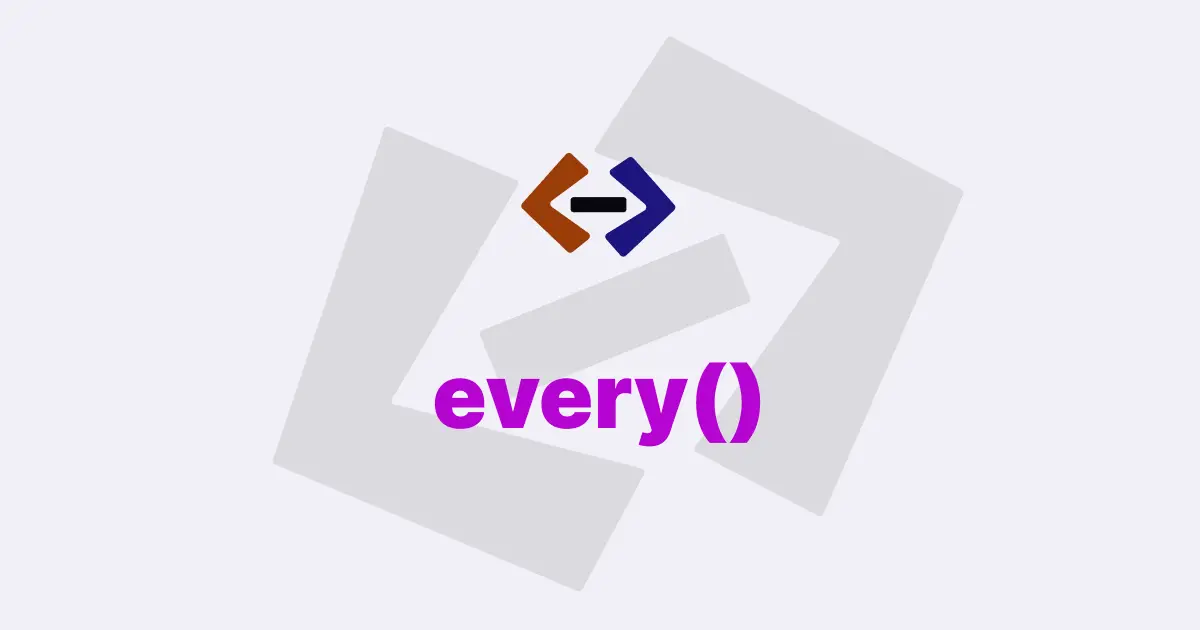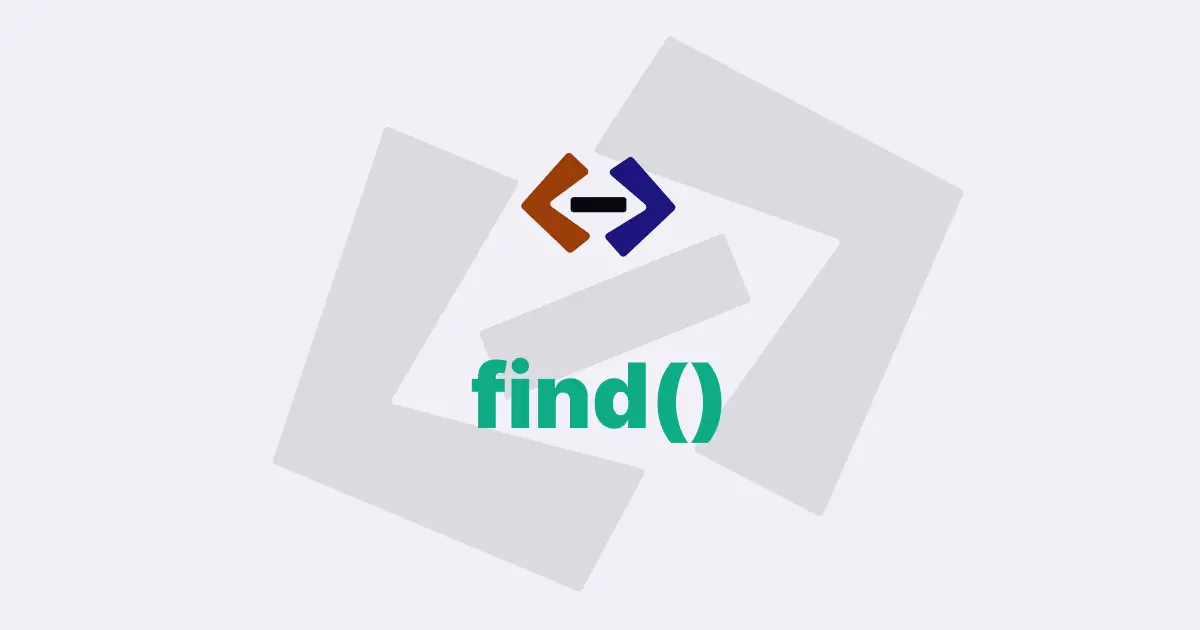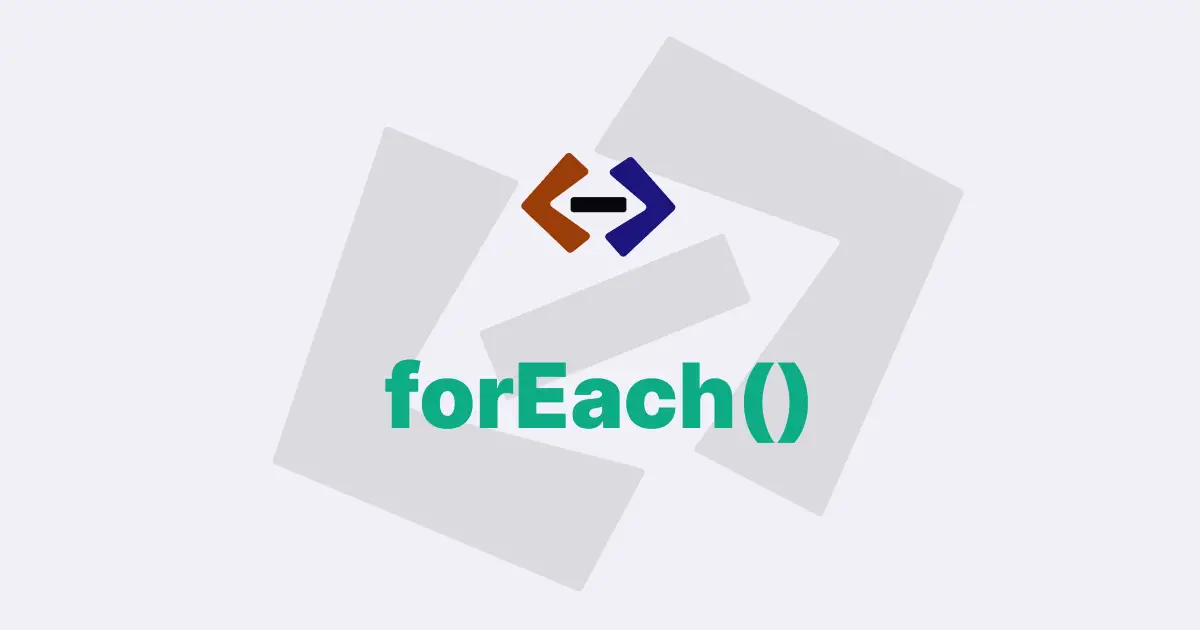The some() method in JavaScript is a powerful array method that provides an efficient way to check if at least one element in an array satisfies a given condition.
It allows developers to write concise and expressive code for various use cases, such as filtering arrays, searching for values, and validating data.
Syntax of the some() method:
The some() method is called on an array and takes a callback function as its argument.
The syntax for the some() method is as follows:
array.some(callback[, thisArg])where:
-
array: The array on which thesome()method is called. -
callback: A function that is called for each element in the array. It accepts three arguments:element,index, andarray. Theelementrepresents the current element being processed,indexrepresents the index of the current element, andarrayrepresents the array on which thesome()method was called. -
thisArg (optional): An object that represents the value of this inside the callback function.
The some() method returns a boolean value: true if at least one element in the array satisfies the given condition, and false otherwise.
Behavior of the some() method:
The some() method iterates through the elements of an array and invokes the callback function for each element until the callback function returns true for any element, or until all elements in the array have been processed.
If the callback function returns true for any element, the some() method immediately stops iterating and returns true.
If the callback function returns false for all elements, the some() method returns false.
For example:
const numbers = [1, 2, 3, 4, 5];
// Check if at least one element is greater than 3
const hasGreaterNumber = numbers.some(function (element) {
return element > 3;
});
console.log(hasGreaterNumber); // Output: trueIn this example, the some() method is used to check if at least one element in the numbers array is greater than 3. Since the array contains the element 4 which satisfies the condition, the some() method returns true.
Common Use Cases for the some() method:
The some() method is commonly used in a variety of scenarios where developers need to check if at least one element in an array satisfies a given condition.
1. Filtering Arrays:
The some() method can be used to filter arrays based on a specific condition. For example, you can use it to filter an array of objects based on a certain property value.
For example:
const users = [
{ name: "Alice", age: 25 },
{ name: "Bob", age: 30 },
{ name: "Charlie", age: 35 },
];
// Check if at least one user is above 30 years old
const hasUserAbove30 = users.some(function (user) {
return user.age > 30;
});
console.log(hasUserAbove30); // Output: trueIn this example, the some() method is used to check if at least one user in the users array is above 30 years old. Since the array contains the user object { name: 'Charlie', age: 35 } which satisfies the condition, the some() method returns true.
2. Searching for Values:
The some() method can be used to search for a specific value in an array. For example, you can use it to find if a particular value exists in an array of strings.
For example:
const fruits = ["apple", "banana", "cherry", "date"];
// Check if the array contains the value 'banana'
const hasBanana = fruits.some(function (fruit) {
return fruit === "banana";
});
console.log(hasBanana); // Output: trueIn this example, the some() method is used to check if the fruits array contains the value 'banana'. Since the array contains the value 'banana', the some() method returns true.
3. Validating Data:
The some() method can be used to validate data in an array based on a specific condition. For example, you can use it to check if at least one element in an array meets a certain criteria.
For example:
const scores = [85, 90, 78, 92, 88];
// Check if at least one score is above 90
const hasScoreAbove90 = scores.some(function (score) {
return score > 90;
});
console.log(hasScoreAbove90); // Output: trueIn this example, the some() method is used to check if at least one score in the scores array is above 90. Since the array contains the score 92 which satisfies the condition, the some() method returns true.
4. Conditional Execution:
The some() method can be used in conditional execution of code based on the existence of a certain element in an array.
For example:
const fruits = ["apple", "banana", "cherry"];
// Execute a specific code if the array contains the value 'banana'
if (
fruits.some(function (fruit) {
return fruit === "banana";
})
) {
console.log("Found banana!");
} else {
console.log("Banana not found");
}In this example, the some() method is used to check if the fruits array contains the value 'banana'. Based on the result, the code inside the conditional statement is executed accordingly.
5. Custom Condition Checking:
The some() method allows developers to define custom conditions for checking elements in an array. This provides flexibility and extensibility in handling complex scenarios where built-in methods may not be suitable.
For example:
const data = [
{ name: "Alice", age: 25 },
{ name: "Bob", age: 30 },
{ name: "Charlie", age: 35 },
];
// Check if at least one user is above 30 years old and has 'Alice' as the name
const hasUser = data.some(function (user) {
return user.age > 30 && user.name === "Alice";
});
console.log(hasUser); // Output: falseIn this example, the some() method is used to check if at least one user in the data array is above 30 years old and has the name 'Alice'. Since there is no user in the array that satisfies both conditions, the some() method returns false.
Thank you for reading, and let’s have conversation with each other
Thank you for reading my article. Let’s have conversation on Twitter and LinkedIn by connecting.




